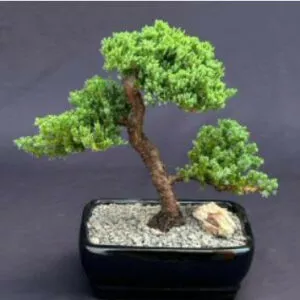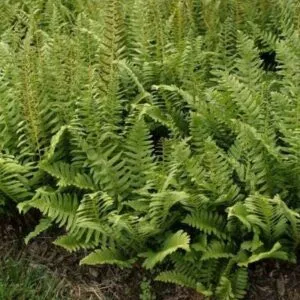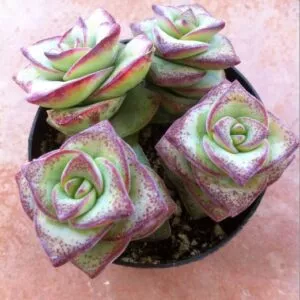No products in the cart.
Table of Contents
Now, if you want one unique succulent plant, nothing comes close to the Woolly Rose or Echeveria Doris Taylor. It looks fabulous in an arrangement or succulent garden. The Doris Taylor is a hybrid between the Echeveria pulvinata and Echeveria setosa.
Another interesting fact is that the plant was named after its creator, Dr. W. Taylor’s wife.

Woolly Rose Care

The succulent plant is petite, measuring about two inches tall when mature. We are sure the plant was just as small as Doris Taylor. It also has a rosette-shaped form similar to other succulents measuring six inches in diameter.
These perennial succulent plants are covered with glistening silver hairs on the fleshy leaves in a pale green color. When grown in bright light, those leaves start to go blush red. Once it blooms, it produces a beautiful yellow flower with a tinge of red.
You will see the flowers appearing around spring through to fall. While the Echeveria Doris Taylor is low maintenance, it is not easily found, making it a rare plant. Yet, the succulent is great for beginner gardeners to the experienced to care for.
It is a beautiful succulent for wreaths, a fairy garden, a living wall, and a rock garden, including containers.
Soil Mix Suitable for Succulent Plants
Doris Taylor has similar needs as most other succulent plants when choosing suitable soil. The woolly rose needs well–draining soil, providing enough airflow around the roots. The only way to accomplish this is by using coarse sand, perlite, or gravel.
The best is to avoid potting mixes with water-retaining matter like peat moss or clay. They are fine when used in small amounts, but too many results in holding back water, leading to root rot.
Alternatively, you can invest in a cactus or succulent soil mix. Another crucial thing for indoor growing in a container is to have enough drainage holes.
Sunlight Needs for Your Succulent Plant

When you grow Echeveria Doris Taylor indoors, it needs bright light at the east, south, or west-facing window. Without light, this petite succulent becomes etiolated when stretching to reach natural light.
Most succulent lovers dislike the appearance as it looks unsightly and cannot be reversed. Hence, it is essential to provide Doris Taylor with enough sunlight. Another great solution is to use a grow light.
When growing Doris Taylor’s succulent outdoors, place her in partial sun as direct sunlight results in leaf damage.
Bright and direct sunlight for 4-6 hours in the morning will make them happy, as long as you place them in a partly shaded area during the afternoon.
Watering Needs for Woolly Rose
Similar to most succulents, your Echeveria Doris Taylor needs infrequent watering. Yet, it is not as drought tolerant as other succulent species. So, it helps to find a perfect balance with your watering schedule.
The best is to leave the soil to dry between watering, but it must not remain dry too long. Furthermore, it also helps to adjust your watering as per the seasonal changes and humidity to temperature.
During the summer months, you may need more water than in winter. The same applies when humidity levels are high as the soil takes longer to dry. Therefore, it is essential to allow excess water to drain and remove it as soon as possible.
Hence, typical watering is using the soak and dry method as the best way to achieve the best results with your Doris Taylor.
Temperature & Humidity Needs

Your Doris Taylor succulent cannot tolerate frost as they are native to warmer climates. Therefore, we recommend bringing your fuzzy appearance plant indoors to overwinter when growing outdoors. Neither should your succulents stand in excessive heat and are best brought indoors.
When standing outdoors for long periods, it helps to provide them with some shade instead of full sun that can damage your plant.
Fertilizing of Echeveria Doris Taylor
Considering care for Echeveria Doris Taylor succulent growers and feeding, you can provide her with a slow-release fertilizer at the start of spring. We recommend a low-nitrogen feed or a cactus fertilizer.
Propagation of This Beautiful Succulent

If there are succulents to propagate quickly, it is the Echeveria Doris Taylor. No matter your chosen method, it is no different from other succulents.
Offsets/Pups
You can separate the offsets from the main plant as a fast technique. You can see tiny plants surrounding the parent plant, known as pups. When separating them with your clean, sharp knife or fingers, the best is to choose offsets with roots.
Once removed, leave them to be callous for a couple of days and plant them in a pot.
Cuttings
This is another popular technique using stem cuttings and is excellent for using the knocked-off ones during repotting.
You can use a sterilized knife to cut the leaves, and once collected from the mother plant, you can leave them for a few days to callous.
Then place them on top of the soil in a pot. You should see new roots forming within a few weeks. Once the roots appear, you can water them.
Collecting Seeds
Your plant grows slowly, and many succulent growers use the offset or cutting method. You can also grow them from seeds, but you will need patients. We recommend soaking the seed before planting them for success.
Echeveria Doris Taylor Varieties
The only other recognizable Echeveria Doris Taylor variety is the cristata. The succulent has a crested form with fleshy leaves and fine silver hairs. Yet, the leaves are smaller while densely packed than the latter.
You see the leaves growing the crest, and despite its unique appearance, it still needs similar care as your Woolly Rose.
Echeveria Doris Taylor Diseases and Pests
With a beautiful succulent like the Woolly Rose, you can still expect pests like scale insects, aphids, spider mites, and mealybugs to invade your plant. Nonetheless, you can spray your plant with neem oil as it is an effective way to keep them away.
Frequently Asked Questions
According to the American Society for the Prevention of Cruelty to Animals, the woolly rose is toxic to cats and dogs when consumed. Hence, keeping this exotic beauty away from kids and pets is best.
Some leading causes of succulents dying are overwatering, root rot, or fungal infection. If you notice a blackish-yellow color, then it helps to take action straight away. First, it helps to remove the infected parts and uproot your plants to remove the excess soil to examine the roots.
Then you can remove dead and damaged roots and provide your woolly rose with fresh soil. It also helps to keep an eye on pests like scale, spider mites, aphids, and mealybugs. These bugs can also cause your Doris Taylor to die.
Yes, your Doris Taylor develops tiny yellow flowers that have a red color accent during spring to fall.
While the Woolly Rose is not a cold hardy plant that can withstand freezing temperatures where you live. You can still grow them in a pot and find them available if you are lucky at some local nurseries. Still, you need not head outdoors, as Plantly can help you find one to add to your collection.
Whether you want to buy, sell or simply reach out to other plant enthusiasts, Plantly is the right place to be!
Only 1 left in stock Only 1 left in stock In stock In stock
Free Shipping
$227.59
Sold By:
BONSAI WORLD LLC
Juniper Bonsai Tree – Trained (juniper procumbens nana)
Sold By:
BONSAI WORLD LLC
Free Shipping
$372.79
Sold By:
BONSAI WORLD LLC
Juniper Bonsai Tree – Trained (juniper procumbens nana)
Only 1 available and it’s in 1 people’s basket
Sold By:
BONSAI WORLD LLC
$10.00
Sold By:
JLP farms TN
5 Native Christmas Ferns Bare Root
Only 30 available and it’s in 1 people’s basket Rated 4.85 out of 5 based on 602 customer ratings17
Sold By:
JLP farms TN
$9.99
Sold By:
Succulent Oasis
Medium Succulent Plant – Crassula Perforata String of Buttons
Only 36 available and it’s in 2 people’s basket Rated 4.84 out of 5 based on 352 customer ratings01
Sold By:
Succulent Oasis






